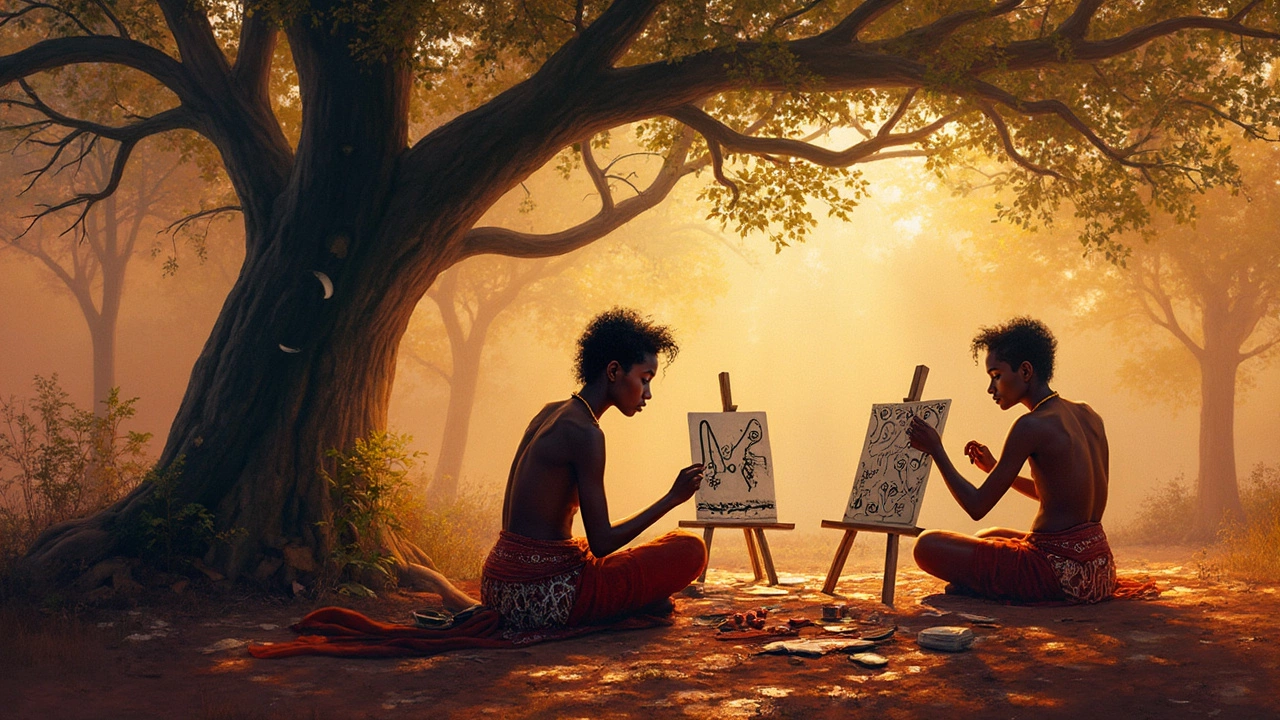Warli Art: What It Is, Where It Comes From, and How You Can Make It
Ever seen those simple stick‑figure scenes with triangular roofs and dancing people? That’s Warli art – a tribal painting style that lives in the villages of Maharashtra’s coastal belt. It’s not fancy, but it’s full of life and a glimpse into the daily world of the Warli tribe.
Warli artists paint on mud walls using a white pigment made from rice flour, water and a bit of gum. The contrast of white on a dark background makes every figure pop. The designs are flat, with no perspective, and they tell stories about hunting, farming, weddings, and festivals.
Key Features and Common Motifs
When you look at a Warli drawing, three things stand out:
- Human figures: Thin bodies, bent knees, and arms raised in a V‑shape. They often form circles or lines that suggest movement.
- Nature symbols: Trees, mountains, sun and moon appear as simple shapes. A tree is usually a stick with a dot of leaves on top.
- Celebration scenes: Weddings, harvests, and dances are shown with lots of little people crowded together, creating a lively vibe.
Colors stay minimal – usually just the white pigment, though modern artists sometimes add black or earth tones for contrast.
How to Try Warli Art at Home
Want to give Warli a go? You only need a few things: a piece of thick paper or canvas, some rice flour or chalk powder, water, and a flat brush or even a clean paintbrush tip.
- Mix rice flour with water until you get a smooth, opaque paste. If you don’t have rice flour, white chalk powder works fine.
- Sketch a simple scene in pencil – think of a village house, a few people, and maybe a tree.
- Start filling in the outlines with your white paste. Keep lines thin and steady; the charm lies in the simplicity.
- Add details like tiny dots for leaves or short lines for steps. Remember, Warli is about what you leave out as much as what you draw.
- Let it dry, and you’ve got a piece of tribal art you made yourself.
If you’re stuck, look up images of traditional Warli murals for inspiration. Copying a few basic shapes helps you get the rhythm before you start inventing your own scenes.
Warli art isn’t just a craft; it’s a cultural record. Each motif reflects how the tribe sees the world. By trying it, you’re also keeping a piece of that tradition alive.
Want to see Warli up close? Visit the Warli Museum in Thane, or check out community centers in Mumbai that host Warli workshops. Many contemporary designers use Warli motifs on fabrics, home décor, and even tech products – showing that this simple style still feels fresh.
So, whether you’re decorating a wall, adding a unique pattern to a t‑shirt, or just curious about India’s tribal heritage, Warli art gives you a direct line to a centuries‑old visual language. Grab a brush, keep it simple, and let the stories flow.
